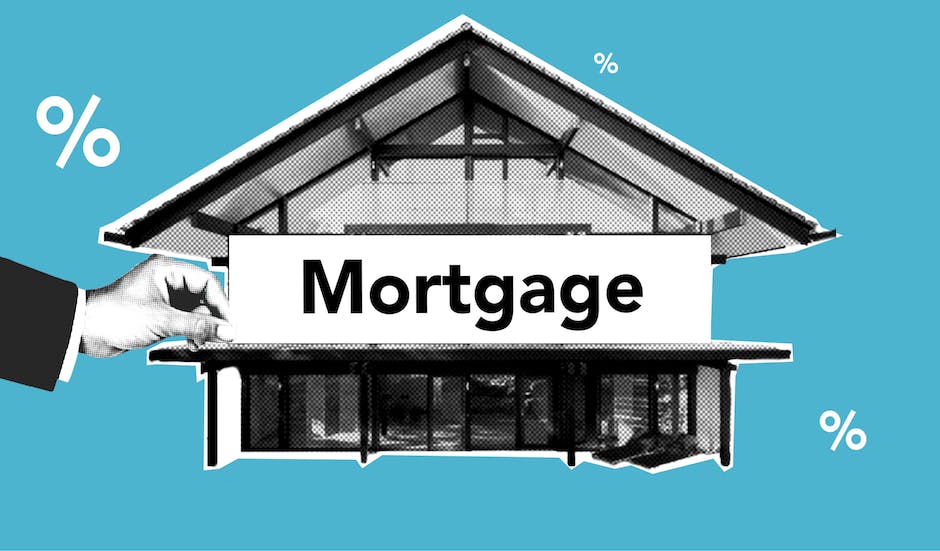The complex relationship between mortgage interest rates and inflation has always been a crucial aspect of economic analysis. As these two economic indicators often influence and impact one another, understanding their interplay becomes vital for policy-making and financial decision-making. This discourse delves into various intricate aspects, beginning from the direct impact of inflation on mortgage rates to the historical trends defining their trajectory. It considers the significant role that the Federal Reserve plays in regulating these rates and, finally, embarks on the daunting task of predicting future trends and what factors may affect these predictions.
Table of Contents
Impact of Inflation on Mortgage Rates
The Role of Inflation in Shaping Mortgage Interest Rates: Connecting the Dots
Inflation: The invisible hand that distinctly influences financial markets, with its reach extending to the cornerstone of the American dream—homeownership. It’s no secret that the effects of inflation are felt across various facets of our economy. But, how does it directly influence mortgage interest rates – an important factor in achieving the homeownership goal? It’s time to delve into it!
To grasp the pattern, we need to understand what inflation is. In the most straightforward terms, inflation is the increase in the price of goods and services over a given period. Driven by supply and demand dynamics, it signals the economy’s health.
Now imagine being a lender. In an inflationary period, the money you’re lending out today will not purchase the same amount of goods and services in the future; its purchasing power gradually erodes. Moreover, there’s an expectation that interest rates will rise. If they stick to the old rates, they’re hesitatingly giving borrowers an open invitation to pay less in real terms.
So, what’s the overlay effect? Mortgage lenders foresee this scenario and adjust their interest rates upwards to compensate for the projected inflation. An increase in these rates ensures lenders can maintain their purchasing power, safeguarding their financial interest.
Simultaneously, the Federal Reserve, the nation’s central bank, plays its part in orchestrating the symphony of economic balance. In broad terms, it’s the organization that adjusts the money availability or liquidity in the market. During periods of high inflation, the Fed tends to hike up the Federal Funds Rate—the rate at which banks loan reserves to each other. This increase cascades down to the consumers affecting the short-term borrowing, consequently pushing mortgage rates higher.
In essence, inflation, consumer behavior, and central bank policies interact in a dance as old as finance itself. Each influences the other, with our dancer of interest—inflation—typically taking the lead, choreographing the future path of mortgage rates.
Deciphering these financial phenomena is not a footnote in the entrepreneurial journey. Successful entrepreneurs keep an eagle-eye over these shifts, ensuring that they can leverage them for their benefit, whether in real estate markets, investment strategies, or protecting their growth trajectory against economic volatility. Keep the tableau of inflation versus mortgage rates on your radar. Far from being dry economic theory, it’s a vital cog in the wheel driving businesses forward. By understanding the dynamics between inflation and mortgage interest rates, savvy business people can generate various strategic advantages.

Historical Trends of Mortgage Rates and Inflation
A Historical Journey of Mortgage Rates and Inflation – An Entrepreneurial Insight
Diving deeper into the intricate labyrinth of economics and finance, let’s explore the historical trends of mortgage interest rates and inflation. This exploration is all about chronology and perspective. The sound entrepreneurial spirit in us undoubtedly realizes the power of retrospection for future market maneuvers.
Going back in time, post World War II saw a surge in housing demand, leading to an increase in mortgage rates. This was the period between the 1940s to the early 1970s. Concurrently, the inflation rate, based on the Consumer Price Index (CPI), was relatively low except for occasional spikes. Interestingly, during this period, inflation and mortgage rates seemed to share a cordial ‘see-saw’ relationship. A surge in one led to a slump in the other.
The early 1980s brought a different tale. The steadily climbing inflation rates broke all records with an unprecedented surge, peaking at almost 15%. Mortgage rates, in a synchronized symphony, paraded an all-time high of around 18%. The period was a true reflection of the irrefutable correlation between inflation and mortgage interest rates. This era was an epitome of the ‘cost-push’ inflation, where increased costs of production pushed the prices up, causing the mortgage rates to soar.
Then entered the wave of ‘stagflation,’ the paradoxical economic situation combining stagnant economic growth and high inflation. Mortgage rates continued their roller-coaster ride, leaving entrepreneurs and businesses to exercise agility in their strategic planning.
Fast-forwarding to the early 2000s, both mortgage rates and inflation were on a steady descent, making it a golden era for homebuyers. Subsequently, the global financial crisis of 2008 sent shockwaves around the world, squeezing the economy and keeping the inflation rate relatively in check. Innovative low mortgage rates were thus introduced to catalyze the sluggish economy.
Post the financial crisis, central banks across the globe held reins to benchmark interest rates, leading to a notably long period of historically low mortgage rates, making the property market once again an alluring pursuit for entrepreneurs and investors alike.
The inescapable entanglement of mortgage rates and inflation is evident from the ebb and flow of their historical trends. For businesses, particularly in real estate and financing sectors, these trends form a crucial reservoir of insights. Knowledge of this undeniably significant relationship aids in shaping competitive strategies and driving innovation amidst a sea of economic uncertainties.
With today’s rapidly changing financial landscape, adaptability is the key. As business leaders, our entrepreneurial instincts guide us to leverage historical lessons, ensuring we surf the dynamic waves of economic trends, rather than drowning in them. Practical knowledge, data-driven insights, and strategic foresight are, therefore, our ultimate weapons against the unpredictability of mortgage rates and inflation dynamics.

The Fed’s Role in Mortgage Rates and Inflation
Unveiling the Fed’s Monetary Policy: A Deeper Dive
The Federal Reserve holds the power to sculpt the nation’s economic landscape with monetary policies that hold transformative power over markets. The relationship between their legislation and the mortgage interest rate, inflation, and consumer behaviors is vast and intricate.
The Federal Reserve’s financial artillery extends to manipulating the Federal funds rate – the interest rate at which banks lend reserve balances to other banks on an overnight basis. Akin to dominoes, a change in the Federal funds rate triggers a succession of alterations in short-term interest rates, foreign exchange rates, long-term interest rates, the amount of money and credit, and, ultimately, a range of economic indicators encompassing employment, output, and the prices of goods and services.
Intertwined with this process are mortgage interest rates. Movements in the Federal funds rate directly shape the interest rates attached to a homebuyer’s mortgage. For instance, when inflation is on the rise, the Federal Reserve often counters by hiking up the Federal funds rate. This chain effect influences banks to raise their prime lending rates, which then nudges the mortgage interest rate upward.
Moreover, the Fed isn’t just a passive observer of market trends; they embody the role of a market maker. By buying and selling government-backed securities, they impact the liquidity of the banking system. During periods of financial unrest, like the economics of 2008, the Fed magnified this role by drastically cutting rates and infusing the market with capital to stabilize the economy.
Such interventions also layer a new level of convolution onto the dynamicity of the housing market. For instance, while excessively low mortgage rates can spike real estate sales, they can conversely instigate inflation. This catalyzes a need for rate hikes – reiterating the cyclical nature of this intricate economy.
Banking on Fed policies plays a cardinal role in the real estate and financing sectors. Embracing an adaptable mindset is more than just favorable—it’s a survival tool. The ability to extrapolate and strategize based on data-driven insights and foresight is vitally important to ride the wave of economic fluctuations and changes in the financial landscape.
Entrepreneurs, executives, and investors who have their pulse on these monetary policy shifts possess a critical advantage. The relationship between Federal Reserve policies, mortgage interest rates, and inflation is carewoven, and whoever leverages this relationship with true understanding can stride through any uncertain economic corridor with confidence. Ignoring the Fed’s monetary policies would be akin to sailing a ship without acknowledging the wind – fraught with risk and prone to failure.
Powerful market players can empathize with the heart of the Fed’s mission – to maintain stable prices, contain systemic risk, and foster sustainable economic growth. By staying attuned to its pulse, business leaders can transcribe the rhythm of its monetary policies into their strategic beats, priming their ventures to capitalize on opportunities created by the Federal Reserve’s actions. If the overlap between monetary policy, mortgage rates, and inflation intrigues you, stay tuned, study, strategize, and prosper. Predetermine the tides, don’t merely ride them.

Predicting Future Trends in Mortgage Rates and Inflation
With the in-depth understanding of inflation and its relationship with mortgage interest rates firmly in place, the question of accurately forecasting future trends arises. This necessity demands the utilization of innovative technological solutions along with astute business strategies.
Historically, the predictions surrounding these trends often revolved around the expert opinions of economists and market analysts. Today, the landscape has vastly changed; the advent of cutting-edge technology now enables the use of smart data-driven forecasting methods. Big Data and advanced analytics have revolutionized our abilities to predict future trends, allowing businesses to realize hidden opportunities and promptly address potential challenges. The same also applies to the world of finance.
Take, for instance, mortgage-backed securities. These are complex financial instruments that are highly sensitive to fluctuations in interest rates. As a result, they have the potential to significantly impact an organization’s profitability. In this context, the power of predictive modeling cannot be overstressed. Algorithms can scan enormous quantities of data to tease out patterns and trends that might be invisible to the human eye, thus enabling the astute financier to make impactful decisions.
As a business, it would be worthwhile to invest in AI-driven predictive analytics. These systems use machine learning and statistical modeling to analyze historical data and predict future behaviours. They’re adept at predicting inflation rates and can be tailored to forecast mortgage interest rates with astonishing accuracy. Moreover, they can account for multiple variables – economic, political, historical to render a well-rounded and reliable prediction.
Fed decisions, GDP growth rates, employment statistics, population demographics, and even the stock market trends can all be taken into account, resulting in extensive and accurate forecasts. Turning raw, disparate data into valuable insights, predictive analytics is not only influencing decisions but also shaping business strategies across several industries and will certainly continue doing so in the future.
With the rise of AI in the finance industry, entrepreneurs and businesses possess the ability to comprehend the effect of external factors on mortgage rates like never before. They’re strategically preparing for changes, formulating flexible plans of action based on forecasted trends. Skilled adaptation and insight-driven action are rapidly becoming distinctive traits of the successful modern-day corporation in the face of ever-present economic and financial uncertainties.
In the end, forecasting future trends in mortgage rates and inflation is both a science and an art. Leveraging advanced analytics, comprehending financial dynamics, understanding historical trends, and adapting to Federal Reserve policies are the keys to successful forecasting.
Harnessing the power of the Federal Reserve’s influences on market dynamics with foresight and understanding can undoubtedly present a competitive edge. In fact, the future belongs to the information-armed, the proactive, and the adaptable. As an entrepreneur, executive, or investor in 2022, consider tapping into the science of forecasting to navigate the exciting, ever-evolving world of finance and seize opportunities therein. Just remember, in the world of economic prediction, having the right tools in place is just as crucial as knowing how to use them.

The intertwined nature of mortgage interest rates and inflation presents a dynamic economic landscape. These rates are susceptible to numerous elements, including economic policies, political stability, and global impacts. Unified efforts from institutions like the Federal Reserve, alongside innovative predictive models, endeavor to make sense of these fluctuations for a more stable economy. As discussed, understanding this crucial relationship is integral in devising monetary policies and making financially cognizant decisions. As we navigate this ever-changing economic sphere, insights into these aspects aid in forming robust responses to potential economic fluctuations.

Lian Jadepeak is a Chartered Financial Analyst (CFA) with a sharp acumen for investment strategies and financial markets. With a background in finance and years of experience in wealth management, Lian offers readers expert insights into smart investing, market trends, and portfolio management. Her clear, analytical approach helps demystify complex investment concepts for both seasoned and novice investors alike.

